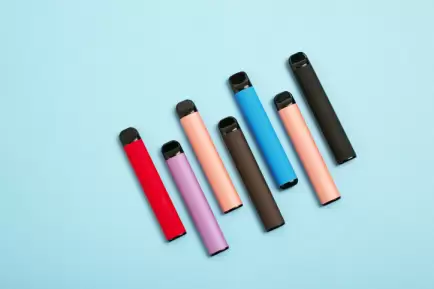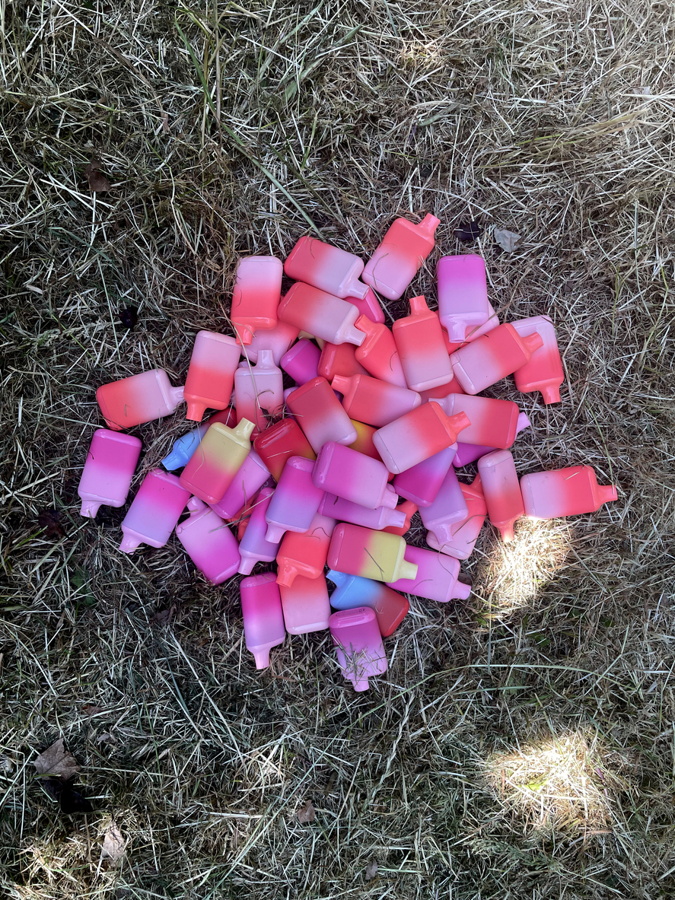Cleaning up the UK vape industry’s image
December 15, 2023

The last few months have put a spotlight on the UK’s vaping industry. This spotlight has not been positive, and the harm reduction benefits of next-generation nicotine products (NGPs) have been lost in headlines focused on non-compliant products and the growth in youth use of vapes. Unless these issues are tackled head-on, vaping in the UK could be impacted by tighter regulations and more limited retail availability. Here Chris Allen, CEO of contract research organization and scientific consultancy Broughton, explores the key issues impacting confidence in the sector.
In July 2019, the UK government launched its Smokefree 2030 ambition, which seeks to reduce tobacco smoking prevalence below five percent by the end of this decade. Achieving this will require an innovative next-generation nicotine sector with effective nicotine delivery products to encourage smokers to switch from smoking to new methods of accessing nicotine.
The UK has probably been one of the most vape-friendly governments in the world, not least because vapes and other tobacco harm reduction (THR) products are critical to achieving a smokefree future by 2030. However,the government’s position is now under increasing pressure because of a growing number of problems within the UK vape sector. Some in the industry might suggest the situation is a product of the sector’s success and also possibly of its own making. Therefore, the industry must take responsibility for cleaning up its act so that vaping can remain a mainstay of government policy and an essential pillar in its smokefree ambition.
Non-compliant vapes
The problems started when media articles highlighted the prevalence of vape products that, despite being notified under UK regulations, failed to comply with these very light-touch regulations. These media stories named well-known vape brands that were non-compliant and available at major supermarkets, damaging consumer trust in the vape category and other THR products. Supermarkets responded by removing the products in question from their shelves, generating additional media coverage on the lack of enforcement of existing vape regulations.
Non-compliance and breaches of the 2016 Tobacco and Related Products Regulation (TRPR) include persistent exceedance of the 2 mL e-liquid volume upper limit, misleading or factually incorrect labelling, and products containing substances prohibited under the TRPR, such as diacetyl. The good news is that rather than a knee-jerk reaction demanding stronger regulation, the government, distributors, and major retailers focused on finding ways to enforce the existing regulations better.

At Broughton, we also tried to help by launching a Vape Compliance Package that aims to rebuild the sector’s trust by reviewing packaging, labelling, nicotine strength, and fill volume. From this, we generate a Certificate of Analysis (CoA) verifying that the parameters assessed comply with UK or EU regulations.
However, manufacturers could solve this non-compliance issue by funding and implementing batch-release testing for their vape products, similar to the standard practice for licenced pharmaceutical products. If batch-release testing were introduced for vape and other NGP products, the additional costs to the consumer would be minimal, but it would ensure the safety, quality, and compliance of products wherever they were purchased. Third-party testing providers can also issue CoA to prove the manufacturer has followed this due diligence. Currently, major retailers and vape distributors are doing this voluntarily, meaning non-compliant products are being dealt with and not finding their way onto supermarket shelves. However, this isn’t the case with small retailers.
Illicit vapes
Unlike non-compliant products, illicit vapes haven’t been notified. This means they could pose a major safety risk to the consumers who use them.These products have no place in the retail chain and must be identified and removed as quickly as possible. The problem is that UK Trading Standards is extremely stretched, although the Department for Business and Trade recently allocated extra funding to help ensure consumer protection.
The solution to this problem is very easy: the removal of illicit vapes by Trading Standards and fining retailers that are found to be selling illegal products. However, there is a gap between the number of shops on the high street and Trading Standards resources. The UK Vaping Industry Association (UKVIA) called for the introduction of a licensing or approved retailer and distributor scheme. This would involve vape retailers and distributors paying a fee and committing that products they sell are both notified with the Medicines and Healthcare products Regulatory Agency (MHRA) and compliant with Classification, Labelling and Packaging (CLP) Regulation.

Other effective measures that should be considered include stopping the importation of illicit vapes at customs before they enter the retail chain, rather than trying to remove them from numerous small shops and better consumer education on spotting illicit products.
Youth access
Large retailers such as supermarkets have well established processes in place to comply with age verification in relation to a wide range of products, including alcohol, cigarettes, and, of course, vapes. However, there is a growing problem with young people being able to purchase vapes from other sources.
A new study from Imperial College London, based on a survey by ASH, found that 53 per cent of vapers aged 11-18 used alternative sources including small shops and online outlets. It also noted that the number purchasing vapes from small shops, including convenience and vape shops, increased from 34 per cent in 2019 to 51 per cent in 2022.
Growth in youth vaping could have serious implications for government support for the category. Without dealing with this issue, politicians and other stakeholders will become increasingly concerned about introducing nicotine to a new generation. We may see a backlash against vaping in the form of flavour bans, higher taxation, and increased regulations on advertising and distribution channels. The industry itself must work together to address youth access and put in place voluntary codes of conduct to show it is a good actor in relation to the issue.
Sustainability
Another issue the UK vape industry must address is the non-recyclability of disposable vapes. As their popularity grows, more used products are being thrown into the general waste system when they should be disposed of as small electronic devices. The Local Government Association, which represents councils in England and Wales, is calling for the UK government to ban the sale and manufacture of single use vapes by next year. The appeal of single use vapes — their small, compact size and cheap, disposable nature — also makes them difficult to recycle. Their popularity is creating a major electronic waste problem for local authorities.

However, there is reason for optimism. By its very nature, the vape industry is an innovation sector that can adapt, so manufacturers must start designing devices for recyclability and reusability. They also need to focus more on educating consumers about how to dispose of the product safely and not dispose of them in household waste. Retailers must play a critical role as they have a responsibility to offer a takeback service for the products they sell with lithium batteries. A key priority for the industry must also be investment in innovative material development, re-engineering and redesigning products with recycling in mind, and innovating across the product life cycle to lower its environmental impact.
The UK faces a challenge in achieving its smokefree ambition, and the recent issues around illicit and non-compliant vape products has brought this into focus. However, the future of the UK’s vape sector is in the industry’s own hands. Manufacturers, distributors, and retailers must come together to find solutions that protect consumers by ensuring the quality and safety of their vape products, while acknowledging the growing issue of youth appeal and taking steps to prevent this. At the same time, the industry needs to look to the future and continue to innovate, introducing better product designs with recycling and reusability in mind.
